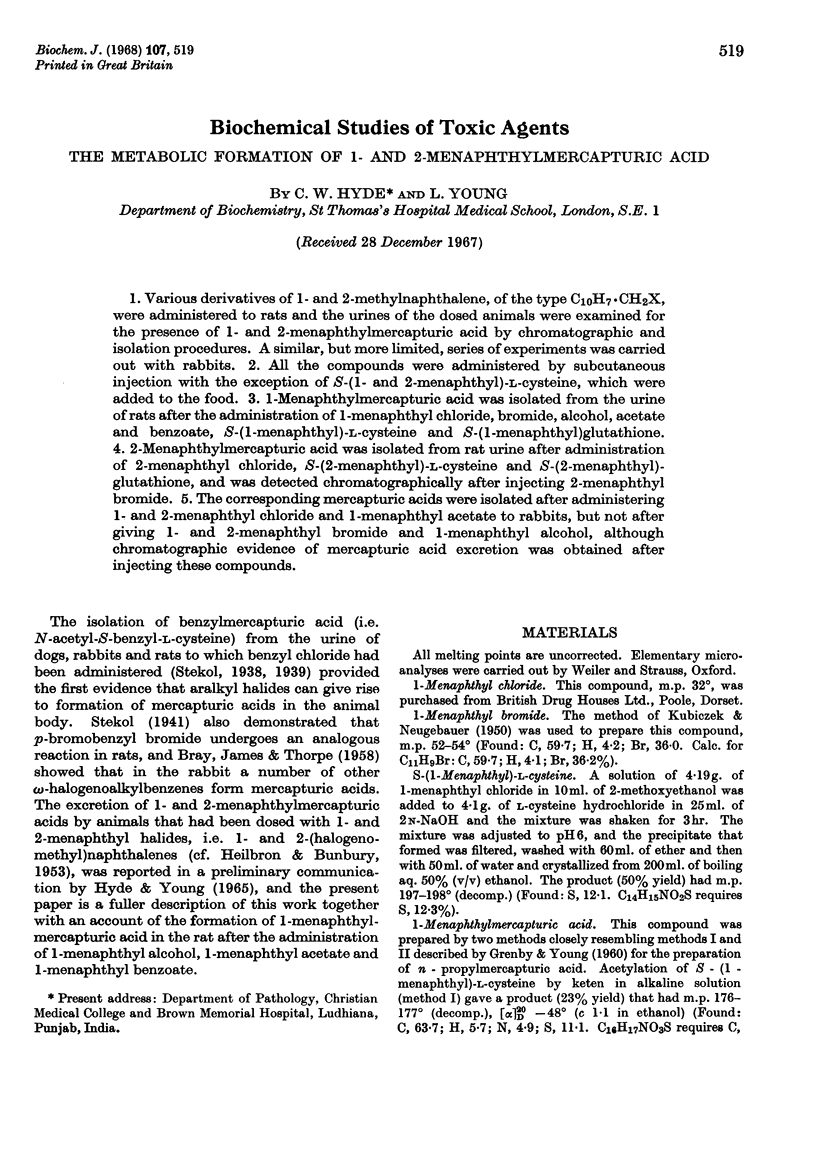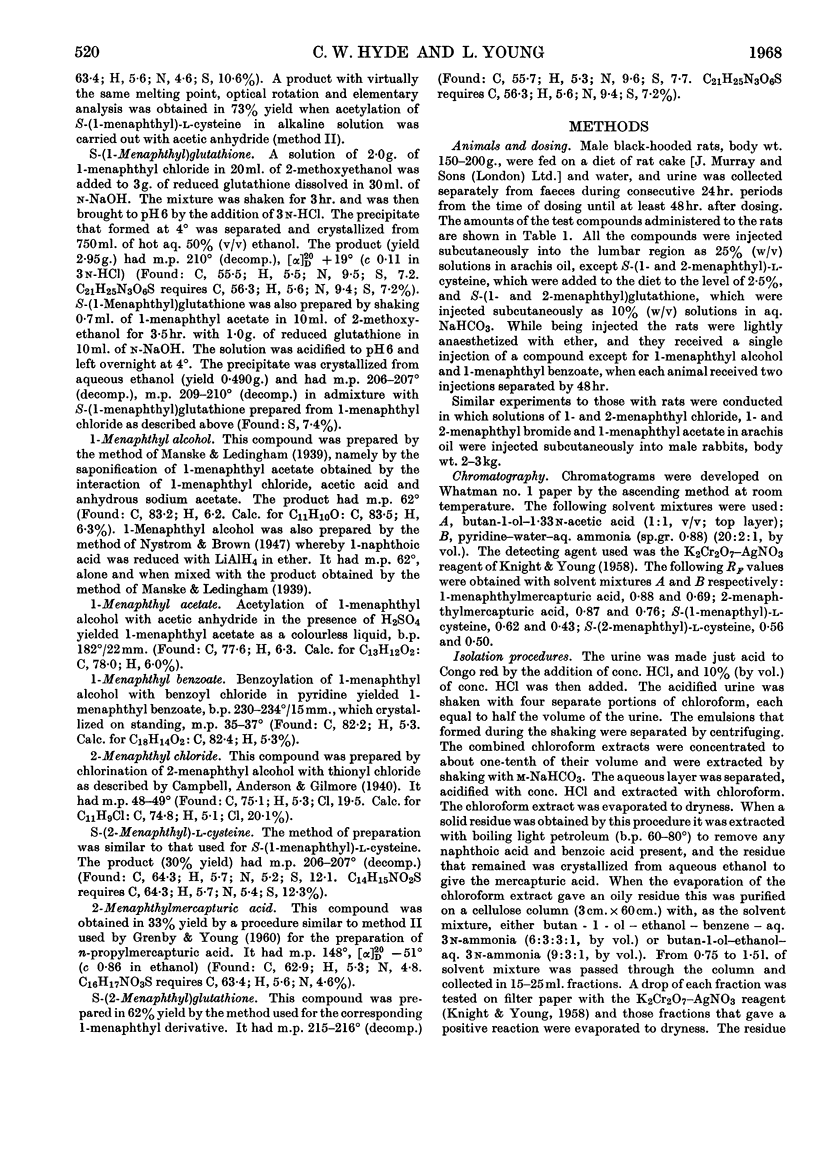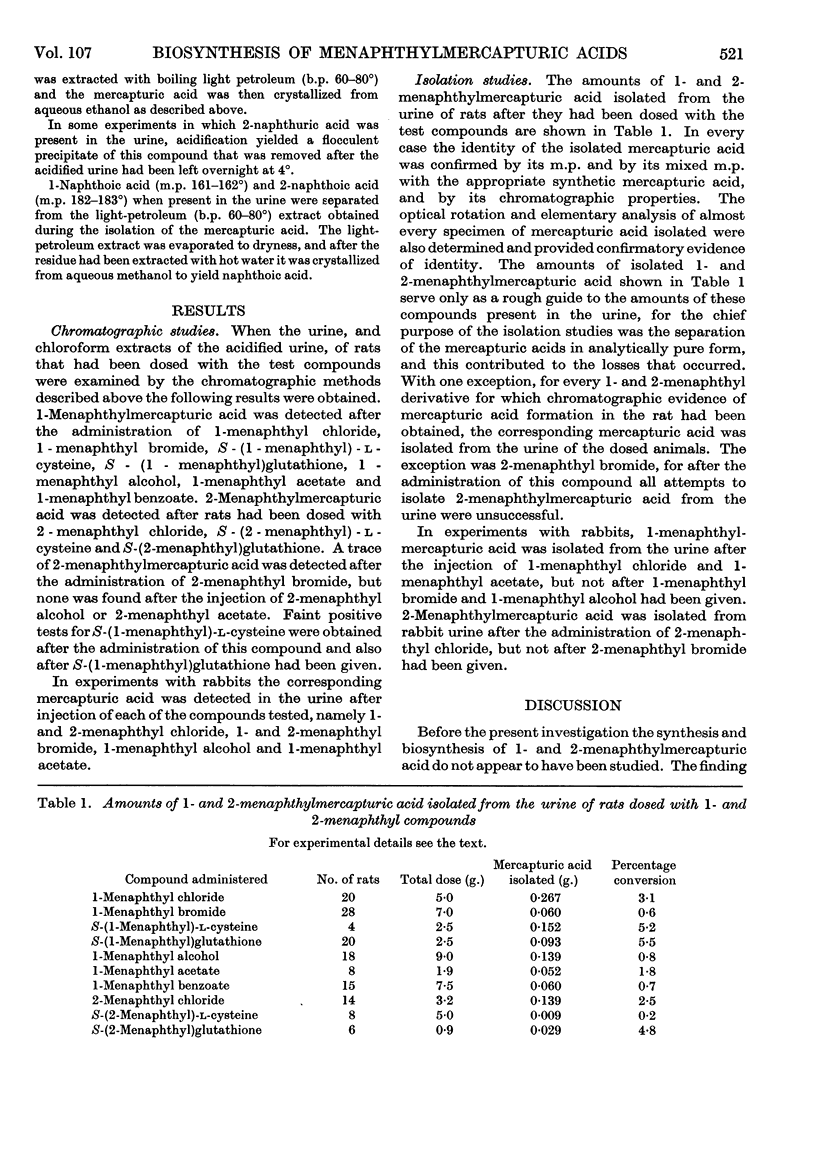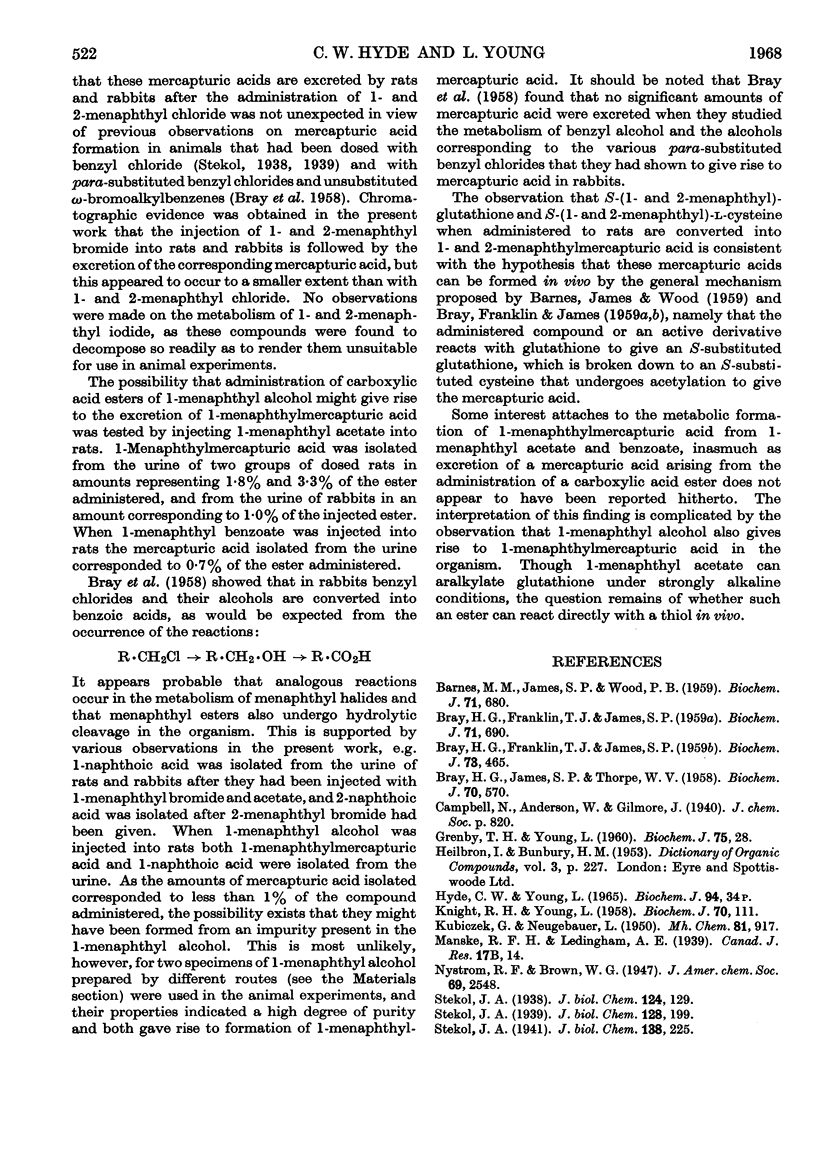Abstract
1. Various derivatives of 1- and 2-methylnaphthalene, of the type C10H7·CH2X, were administered to rats and the urines of the dosed animals were examined for the presence of 1- and 2-menaphthylmercapturic acid by chromatographic and isolation procedures. A similar, but more limited, series of experiments was carried out with rabbits. 2. All the compounds were administered by subcutaneous injection with the exception of S-(1- and 2-menaphthyl)-l-cysteine, which were added to the food. 3. 1-Menaphthylmercapturic acid was isolated from the urine of rats after the administration of 1-menaphthyl chloride, bromide, alcohol, acetate and benzoate, S-(1-menaphthyl)-l-cysteine and S-(1-menaphthyl)glutathione. 4. 2-Menaphthylmercapturic acid was isolated from rat urine after administration of 2-menaphthyl chloride, S-(2-menaphthyl)-l-cysteine and S-(2-menaphthyl)-glutathione, and was detected chromatographically after injecting 2-menaphthyl bromide. 5. The corresponding mercapturic acids were isolated after administering 1- and 2-menaphthyl chloride and 1-menaphthyl acetate to rabbits, but not after giving 1- and 2-menaphthyl bromide and 1-menaphthyl alcohol, although chromatographic evidence of mercapturic acid excretion was obtained after injecting these compounds.
Full text
PDF



Selected References
These references are in PubMed. This may not be the complete list of references from this article.
- BARNES M. M., JAMES S. P., WOOD P. B. The formation of mercapturic acids. 1. Formation of mercapturic acid and the levels of glutathione in tissues. Biochem J. 1959 Apr;71(4):680–690. doi: 10.1042/bj0710680. [DOI] [PMC free article] [PubMed] [Google Scholar]
- BRAY H. G., FRANKLIN T. J., JAMES S. P. The formation of mercapturic acids. 2. The possible role of glutathionase. Biochem J. 1959 Apr;71(4):690–696. doi: 10.1042/bj0710690. [DOI] [PMC free article] [PubMed] [Google Scholar]
- BRAY H. G., FRANKLIN T. J., JAMES S. P. The formation of mercapturic acids. 3. N-Acetylation of S-substituted cysteines in the rabbit, rat and guinea pig. Biochem J. 1959 Nov;73:465–473. doi: 10.1042/bj0730465. [DOI] [PMC free article] [PubMed] [Google Scholar]
- BRAY H. G., JAMES S. P., THORPE W. V. Metabolism of some omega-halogenoalkylbenzenes and related alcohols in the rabbit. Biochem J. 1958 Dec;70(4):570–579. doi: 10.1042/bj0700570. [DOI] [PMC free article] [PubMed] [Google Scholar]
- GRENBY T. H., YOUNG L. Biochemical studies on toxic agents. 12. The biosynthesis of n-propylmercapturic acid from n-propyl halides. Biochem J. 1960 Apr;75:28–33. doi: 10.1042/bj0750028. [DOI] [PMC free article] [PubMed] [Google Scholar]
- KNIGHT R. H., YOUNG L. Biochemical studies of toxic agents. 11. The occurrence of premercapturic acids. Biochem J. 1958 Sep;70(1):111–119. doi: 10.1042/bj0700111. [DOI] [PMC free article] [PubMed] [Google Scholar]


